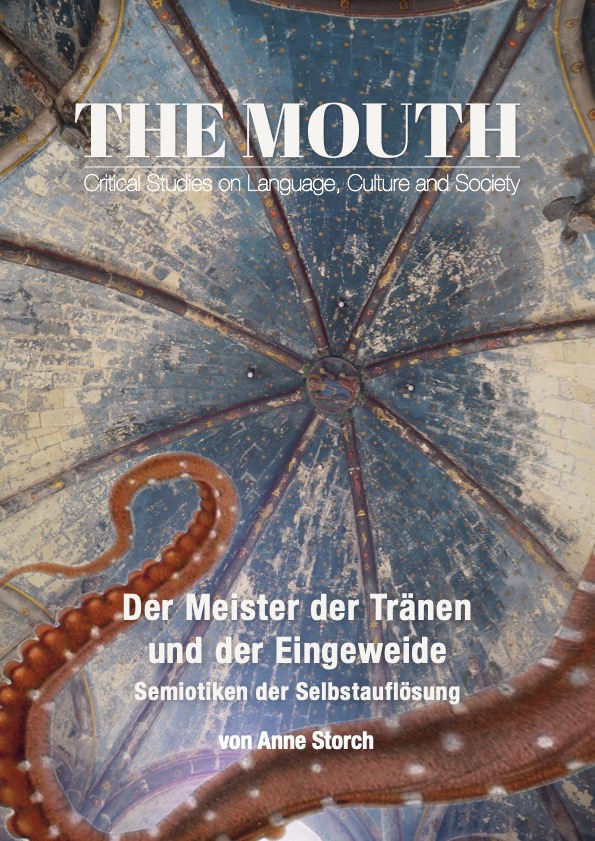Der Meister der Tränen und der Eingeweide
Semiotiken der Selbstauflösung
DOI:
https://doi.org/10.18716/ojs/the_mouth.11845Abstract
Diese Arbeit ist aus der Auseinandersetzung mit dem Kontrafaktischen in der sprachwissenschaftlichen Forschung heraus entstanden: was wäre, wenn die Vorstellungen, die unsere Vorfahren (und die anderer Leute) hinsichtlich sprachlicher Praktiken pflegten, erinnert und beachtet würden? Was wäre, wenn die Perspektiven auf Kommunikation derjenigen Menschen, deren Spuren als Graffiti an Pilgerstätten und den Mauern alter Gebäude überdauern, ernstgenommen und nicht in Vergessenheit geraten wären? Dann würden wir vielleicht besser verstehen, dass es bei alldem – Sprache, Zeichen, Klang – auch immer um Erfahrung und Verwandlung geht und nicht nur um das Übermitteln von Botschaften. Das ist im Grunde nichts neues, aber der Versuch, Spuren dahingehend zu verfolgen, dass Auskunft über Sprache und Zeichen als Teil von Selbstauflösung – infolge von Pilgerschaft und Transformation – erhalten wird, ist es schon. Und so finden sich in den drei hier versammelten Texten ein Bericht über das Ausgilben aus dem akzelerierten Leben hinaus, eine Studie über das Schaben von heiligem Staub, der in enger Beziehung mit dem Klang von Gebet und Gesang steht und der aus sich aus einem Caritasgedanken heraus auflösenden Gemäuern kommt, und eine Untersuchung der Figur des Säulenfressers, der aus dem Inneren heraus Ordnung und Halt infrage stellt und uns daran erinnern mag, dass wir und unsere Gebäude am Ende wieder Gebrösel und Sediment sind.

Downloads
Published
Issue
Section
License
Copyright (c) 2025 Anne Storch

This work is licensed under a Creative Commons Attribution 4.0 International License.
CC BY 4.0 deed
https://creativecommons.org/licenses/by/4.0/deed.en
You are free to:
- Share — copy and redistribute the material in any medium or format for any purpose, even commercially.
- Adapt — remix, transform, and build upon the material for any purpose, even commercially.
- The licensor cannot revoke these freedoms as long as you follow the license terms.
Under the following terms:
- Attribution — You must give appropriate credit , provide a link to the license, and indicate if changes were made . You may do so in any reasonable manner, but not in any way that suggests the licensor endorses you or your use.
- No additional restrictions — You may not apply legal terms or technological measures that legally restrict others from doing anything the license permits.
Notices:
You do not have to comply with the license for elements of the material in the public domain or where your use is permitted by an applicable exception or limitation .
No warranties are given. The license may not give you all of the permissions necessary for your intended use. For example, other rights such as publicity, privacy, or moral rights may limit how you use the material.Notice
This deed highlights only some of the key features and terms of the actual license. It is not a license and has no legal value. You should carefully review all of the terms and conditions of the actual license before using the licensed material.
Creative Commons is not a law firm and does not provide legal services. Distributing, displaying, or linking to this deed or the license that it summarizes does not create a lawyer-client or any other relationship.
Creative Commons is the nonprofit behind the open licenses and other legal tools that allow creators to share their work. Our legal tools are free to use.





